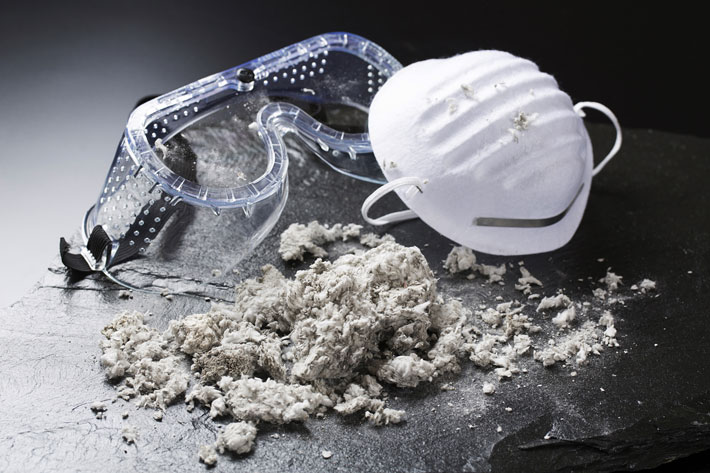
Mesothelioma is an aggressive cancer of the mesothelial cells. These cells exist in the lining that covers the outer surface of the body’s organs. Mesothelioma occurs most often in the pleura, or the lining of the lungs. However, the cancer can also attack the linings of the heart and abdomen. The main cause is exposure to asbestos.
There is no cure, but palliative therapy may improve a patient’s quality of life.
In 2015, the fatality rate for mesothelioma in the United States (U.S.) was 10.93 per million people. Only 9 percent of those diagnosed with mesothelioma live longer than 5 years.
Fast facts on mesothelioma:
Here are some key points about mesothelioma. More detail is in the main article.
- Mesothelioma is an aggressive form of cancer that most commonly affects the lungs.
- It is most likely to result from exposure to asbestos, which may have been up to 30 years before symptoms appear.
- There is no cure, and treatment focuses on relieving symptoms and improving quality of life.
What is mesothelioma?

Cancers happen when there is uncontrolled division of mutated cells. Mesothelioma is an aggressive form of cancer, meaning that it progresses and spreads quickly.
There are three types:
- Pleural mesothelioma is the most common form. It affects the pleura, or the lining around the lungs.
- Peritoneal mesothelioma is the second most common form. It attacks the lining of the abdomen, called the peritoneum.
- Pericardial mesothelioma is the rarest form. It affects the protective layer of the heart.
Fifty-five percent of those with mesothelioma survive for 6 months after diagnosis, and 33 percent survive for a year.
Symptoms
It can take up to 30 years for symptoms to show after exposure to asbestos particles and dust. Diagnosis often happens when the disease is already advanced. The outcome depends on how early the malignancy can be diagnosed. Signs and symptoms vary depending on the location of the cancer in the body.
Pleural mesothelioma can be indicated by:
- shortness of breath
- coughing, often painful
- unexpected and unexplained weight loss
- pain under the ribcage
- detectable lumps under the skin in the chest area
- lower back pain
- discomfort in the side of the chest
- exhaustion
- sweating
- fever
- difficulty swallowing
Peritoneal mesothelioma can involve:
- unexplained weight loss
- abdominal pain
- swelling in the abdomen
- lumps in the abdomen
- nausea and vomiting
Pericardial mesothelioma causes:
- low blood pressure
- shortness of breath
- fluid retention, or edema, often in the legs
- heart palpitations
- extreme fatigue following light exertion
- chest pain
Causes

Mesothelioma is directly linked to exposure to a combination of six minerals made from long, thin fibers called asbestos.
Asbestos is a group of minerals that occur naturally. They exist as fibers or bundles. These fibers may be found in soil or rocks and exist in many parts of the world naturally. Asbestos is made of silicon, oxygen and some other elements.
Asbestos is used in a range of products, especially building materials, including siding, floor tiles, ceiling materials, and roof shingles. Its presence is also found in friction products, such as brake parts, as well as heat-resistant fabrics, packaging, coatings, and gaskets.
It was often used in the past to insulate products and buildings and make them soundproof or fireproof.
When asbestos products are installed, repaired, or demolished, the fibers can become airborne. They can then be inhaled or swallowed and become permanently lodged in the lungs, for decades in some cases. Other organs can also be affected. Mesothelioma can develop from these fibers.
Who is at risk?
The likelihood of developing mesothelioma is directly proportional to the length of exposure to asbestos, and how much a person inhaled. People in jobs with high exposure, such as on construction sites, steel mills, or power plants, have the highest risk of developing the disease.
Even family members who have never entered an asbestos-rich environment can be exposed. Workers exposed to asbestos can accidentally carry fibers home in their clothing, and become inhaled by other members of the household.
The World Health Organization (WHO) said that approximately 125 million people globally were exposed to asbestos at work in 2005, despite their employers having known about the link to cancer and other lung diseases for over six decades. Most work-related exposure today occurs in developing nations.
In much rarer cases, mesothelioma may be linked to:
- irradiation
- inhalation of fibrous silicates such as erionite, zeolite and intrapleural thorium dioxide
Diagnosis

Mesothelioma is often diagnosed at a more advanced stage of the cancer. The doctor will ask about personal and family medical history and conduct a physical examination. They will also ask about previous employment if mesothelioma is suspected, to assess any potential exposure to asbestos.
If mesothelioma is suspected, imaging scans such as an X-ray or computed tomography (CT) scan will be used to assist with diagnosis.
Biopsy
A biopsy can confirm the diagnosis. The type of biopsy depends on where the symptoms are.
In the the chest or abdominal area: The doctor will use a fine-needle aspiration. A small needle is inserted into the abdomen and chest to remove and test some fluid or piece of tissue.
In the chest area only: The doctor will run a thoracoscopy. A thoracoscope is inserted through a small incision between the patient’s ribs. A thoracoscope is a tube with a small camera at the end, designed for examining the chest cavity. The surgeon then removes a piece of tissue.
Thoracotomy
In a thoracotomy, the surgeon opens the chest between the ribs to see the target area and check for signs of cancer. Some tissue may be removed for testing in the laboratory.
Laparoscopy or laparotomy
If there are symptoms in the abdominal area, the doctor may carry out a laparoscopy or laparotomy to examine the area and take tissue samples for testing.
A laparoscopy involves inserting a laparoscope into a small incision in the abdominal wall. The laparoscope has a small camera, like the thoracoscope. Samples can be taken.
If more information is needed, a laparotomy may be requested. The surgeon opens and examines the abdomen. Tissue samples may be removed and sent to the lab.
A pathologist can look at the tissue or fluid samples through a microscope, to see whether there is malignancy, what types of cells are involved, and how advanced the cancer is.
If the surgeon plans to remove all or part of a lung, lung function tests may be carried out to assess how well the lungs are working, before surgery. This will show whether it is safe to carry out surgery.
Staging
Diagnosis will confirm whether cancer is present, and how far it has spread. The stage of the cancer will be assigned between stage 1 and stage 4.
Stage 1 mesothelioma the cancer is still localized inside the lining around the lung. It has not spread. At Stage 4, it has spread to distant organs and around the chest.
Treatment

Treatment will depend on several factors, including:
- the location of the cancer
- the stage of the cancer
- the patient’s general health and age
Mesothelioma is usually spotted after a period of progression and is often aggressive. For this reason, fewer than half of patients will survive for a year after diagnosis. Highly advanced tumors can no longer be surgically removed. The only remaining option in many cases is to try to control the cancer, slow it down, and maximize comfort for the patient.
Treatment at a late stage can sometimes cause severe side effects, so pain management and optimizing quality of life may be the better option. The doctor, patient, and family members should discuss the variety of treatment options thoroughly.
Options for treatment
Options include:
Surgery: The surgeon removes the tumors with an invasive procedure. Normally, this is only appropriate during the early stages. Removing all or part of the cancer can slow tumor growth and relieve symptoms. Sometimes, the surgeon will remove the lung and surrounding tissue, followed by radiation therapy.
A pleurectomy or peritonectomy removes the lining around the lungs or abdominal cavity, to relieve symptoms. A tumor that cannot be completely removed may be debulked, or reduced in size. A catheter or tube, may be installed to relieve fluid on the lungs.
Pleurodesis: Drugs such as tetracycline or bleomycin are inserted between to pleura. This inflames the pleura, bringing them back together and blocking potential fluid buildup in the space.
Chemotherapy: If tumors cannot be surgically removed, chemotherapy may be used to shrink them and slow their progress. Neoadjuvant chemotherapy may be applied before surgery to make it easier to remove a tumor. Adjuvant chemotherapy is used after surgery to prevent recurrence.
Radiation therapy: This may be used to reduce the severity of symptoms in those with pleural mesothelioma. It is sometimes used to prevent metastasis after a biopsy or surgery.
Cancer cells may be left behind after surgery and continue to recur Chemotherapy or radiation therapy can sometimes reduce this risk.
Outlook
In general, the prognosis for patients with mesothelioma is not encouraging. Malignant mesothelioma is an extremely aggressive type of cancer. It also has a long latency period, so that diagnosis often occurs when the cancer is already advanced. The patient needs to consider that there are exceptions, and ongoing research into new treatments and possibilities for symptom management is being made.
The information on this site is not intended or implied to be a substitute for professional medical advice, diagnosis or treatment. All content, including text,graphics,images and information, contained on or available through this web site is for general information purposes only.




Leave a Reply